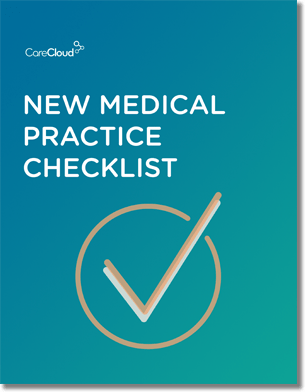Recently, I was reading a blog post by a physician who was complaining about “template medicine.”
The author was lamenting that he had been sucked down a black hole by the demands of his EHR, quality demands and government demands (among other things).
He expressed that he wanted to return to the times when he could practice the “art” of medicine, to paint a good picture of care for his patients. I imagine that he is expressing what many other physicians feel and believe.
Mechanics and Medicine
I passed this story along to my mechanic. I have been using his services for over two decades and we have a ’95 Camry running dependably, quietly and efficiently with nearly 300,000 miles on it!
During our discussion of the physician he stated that his business has changed a great deal in the last 15 years. Almost 50 percent of the work he and his mechanics do is based upon electronics—onboard computers running a variety of complex systems that make up autos today.
My mechanic explained that although the demands of auto repair have changed considerably, there are many aspects of the business that remain the same as when his father started the business over 35 years ago — value to the customer, dependability and excellent outcomes. The more things change, the more they stay the same!
Now, I do not claim that repairing autos is the same as healing patients, but I do see some similarities. Both fields face new demands from technology. There are new regulations in both fields.
I know physicians who have been able to keep the human touch in their work with patients in spite of the overwhelming new demands.
Technology and the Human Touch
Dr. Christine Sinsky details some of the adjustments that she and her staff have made so that they can interact with patients in an article for Family Practice Management.
As Dr. Sinsky says, “Do everything you can do for the patient in front of the patient.”
One of the time-saving approaches she uses is custom templates in her EHR that minimize the distraction of picking and choosing that is found in standard templates. She also dictates some of her observations during the exam for transcription later.
Dr. Sinsky’s staff also helps a great deal in maintaining patient encounter time. For example, staff and nurses make sure that the patients do their lab work several days before an appointment. That way, results are already in the EHR when the patient visits and follow-up phone calls are eliminated. This saves her at least an hour a day.
Such streamlining and adaption in the face of the ever-changing world of health care is necessary to ensure the success of physicians and providers.
Managing and improving processes at the healthcare site will help improve the amount of face time the provider has with the patient. It will also help improve the outcomes and can improve the bottom line.
Where should providers begin if they are not already actively engaged in creating streamlined processes?
Make a Plan
In a proposal to a new client recently, I advocated that we start by standardizing key processes. This way, she could make sure that everyone was consistent in delivering services.
This approach also helps the staff in coming to a common agreement on the way to effectively deliver service. The standardization of workflow at the site can then be used as a basis to improve the workflow or process.
The goal is to come to a common agreement on the best approach to deliver care in the healthcare setting, then to examine it again at a later time after successful implementation of the process in order to make further improvements.
In spite of the new demands and technologies for providing care to patients, I believe that it is possible for physicians and staff to remain engaged and face-to-face with their patients.
Processes that fit well at the site where services are delivered can be created, standardized and continually improved. With such an approach, outcomes should improve for all involved — physicians, staff and patients.
Donald Bryant is a healthcare consultant who helps healthcare providers meet their challenges. Visit Bryant’s Healthcare Solutions website to get a free article: 7 Challenges in Healthcare and How to Solve Them. You may also contact Mr. Bryant directly at 616-826-1699.

Do you know what you need when setting up a new medical practice?



